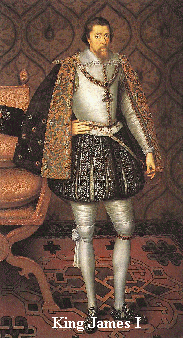The Baronetage is of far more ancient origin than many people may think. The term baronet is believed to have been first applied to nobility who for one reason or another had lost the right of summons to Parliament. The earliest mention of baronets was in the Battle of Barrenberg in 1321. There is a further mention of them in 1328 when Edward III is known to have created eight baronets. Further creations were made in 1340, 1446 and 1551.
At least one of these, Sir William de la Pole in 1340, was created for payment of money, presumably expended by the King to help maintain his army. It is not known if these early creations were hereditary but all seem to have died out.

The present hereditary Order of Baronets in England dates from 22nd May 1611 when it was erected by James I who granted the first Letters Patent to 200 gentlemen of good birth with an income of at least £1000 a year. His intention was two fold. Firstly he wanted to fill the gap between peers of the realm and knights so he decided that the baronets were to form the sixth division of the aristocracy following the five degrees of the peerage. Secondly, and probably more importantly, he needed money to pay for soldiers to carry out the pacification of Ireland.
Therefore those of the first creation, in return for the honour, were each required to pay for the upkeep of thirty soldiers for three years amounting to £1095, in those days a very large sum.
In 1619 James I erected the Baronetage of Ireland and laid plans for a further new Baronetage with the object of assisting the colonisation of Nova Scotia. However he died in 1625 before this could be implemented. In 1625 Charles I took up the previous plans and erected the Baronetage of Scotland and Nova Scotia. The new baronets were each required to pay 3000 marks (£166-13s-4d sterling equivalent at the time) with 1000 marks to go to Sir William Alexander’s past colonising expenses and 2000 marks to support six settlers for two years. Over a hundred of these baronetcies, now known as Scottish baronetcies, have survived to this day. The Duke of Roxburghe is the Premier Baronet of Scotland by his Baronetcy of Innes-Ker of Innes, created in 1625.
As a result of the union of England and Scotland in 1707 all future creations were styled Baronets of Great Britain. With the union of Great Britain and Ireland in 1801 new creations were styled Baronets of the United Kingdom. The position at 1 January 2024, including baronetcies where succession is dormant or unproven, is that 1,231 baronetcies divided into five classes of creation are included on the Official Roll. Of these there are:
- 142 of England
- 60 of Ireland
- 115 of Scotland
- 125 of Great Britain
- 789 of the United Kingdom.
The Premier Baronet is Sir Nicholas Bacon, 14th Baronet of Redgrave, created in 1611.
250 of these titles are held by peers. Approximately 230 currently have no holder entered on the Official Roll.
Under the two Royal Warrants of 1612 and 1613 issued by James I certain privileges were accorded to baronets of England.
Firstly, no person or persons should have place between baronets and the younger sons of peers. Secondly, the right of knighthood was established for the eldest sons of baronets (though this was to be revoked by George IV in 1827). Thirdly, baronets were allowed to add the Arms of Ulster as an inescutcheon to their armorial bearings. This last consisted of “in a field Argent, a hand Geules, or a bloudy hand”.
These privileges were extended to baronets of Ireland and, less the Arms of Ulster, to baronets of Scotland. They continue to this day for all baronets of Great Britain and the United Kingdom created subsequently.
An interesting analysis of the current state of Baronetage (as at 1 July 2025), by Mr Stephen Kershaw CBE, can be viewed using this link.
STANDING COUNCIL OF THE BARONETS
Supporting the interests and dignities of Baronets since 1898
